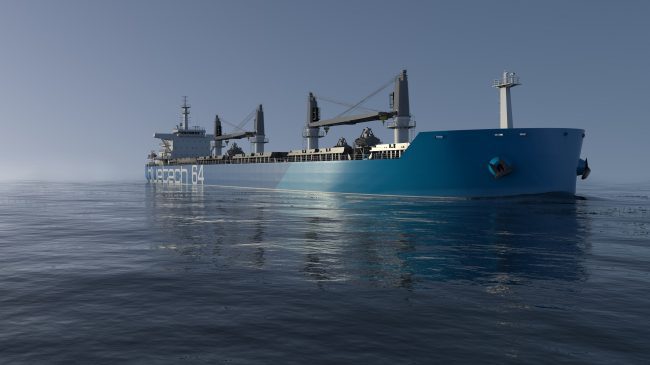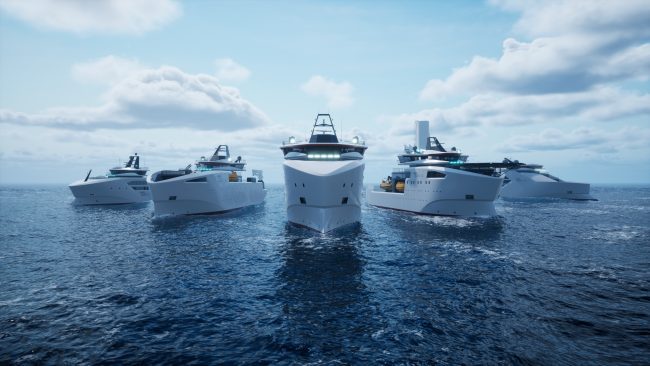Usuki Shipyard expands its ship design tools with NAPA 3D Models
Over the last eight years, Usuki Shipyard in Japan has been expanding its use of NAPA’s ship design tools. The team from the Basic Design Section of the Ship Design Department is now looking to expand its use of NAPA 3D Models to include the design of onboard equipment.
Usuki Shipyard has around 150 employees and about 350 subcontractors. Together, they build five to six vessels a year. The yard’s main product is a 19,700dwt chemical tanker, a world-first design that has cargo tanks made from duplex stainless steel and stainless clad steel as two layers. The yard also builds other tankers as well as domestic ferries.
There is a strong focus on quality control and skill development, says Mr Kazumasa Sakaida, Director and General Manager of the Design Department. “We want our customers to choose Usuki again!”
The Basic Design Department is responsible for the hull form and general arrangement. The team undertakes the calculations required for hydrostatics and intact/damage stability, inclining test and sea trials, prepares the approval and final plans, and produces the stability booklet. NAPA is their primary tool for all of these design and calculation tasks.
The shipyard is skilled in building twin skeg (split stern) hull forms. Where traditional design platforms fail, NAPA’s solutions can handle these designs.
Streamlining the design process
“We have limited resources,” says Mr Motoki Kawagoe, Senior Staff Member in the Department. There are only two people responsible for all the initial ship design calculations. “It was time-consuming to produce the stability booklet and other documentation. We wanted to save time, and with NAPA tools, we have become very efficient.”
NAPA’s applications can be customized, so the team has been able to define their own approach to the many tasks they undertake, suited specifically to Usuki’s needs.
They have gradually expanded their use of the tools. Initially, NAPA was used for hull form design and lines drawings. The stability calculation modules were added later, and now also NAPA Steel is used for estimating block weights.
“Earlier we had to use three different systems to create documentation for design loading conditions. Now we only need one system, NAPA, for that,” said Mr Kawagoe.
Maximizing the benefits of early 3D models
The use of stainless steel requires high quality design and construction. “We can estimate the weight of the blocks more accurately and earlier in the design stage by creating a NAPA Steel model,” says Ms Fukuyo Mieno, Senior Staff Member. The team is also working on using the same NAPA Steel model for the shipbuilding plan for the manufacturing department.
NAPA Steel supports a ship’s structural design by offering the best finite elements (FE) automesher for ship structures, and it connects seamlessly to all major class rule check packages. It provides fast and reliable numeric output such as weight and center of gravity calculations, bill of materials for early estimation of materials, welding lengths, early production load and cost estimation, and painting area calculation. All output and reports are highly customizable to meet local requirements. The versatile 3D interface functions on NAPA Steel can also seamlessly be connected to external software.
“We are currently working on using the block model created with NAPA Steel for equipment arrangement design by integrating it with other software,” says Ms Mieno. The team plans to utilize the 3D block models exported from NAPA’s software to simulate the shipbuilding processes on the virtual shipyard.
Using NAPA’s solutions to build the 3D model is not complicated, says Mr Kawagoe. “It is easy to learn and very intuitive.”
Mr Takashi Yamamoto, Deputy Manager of Basic Design Section, says the 3D Model is also exported to a 3D printer to create mock-ups for internal design reviews and as customer gifts representing the built vessels.
NAPA’s 3D modelling and design functionalities are the most powerful in the industry. “We’ve spent over 30 years combining our comprehensive ship design knowledge and extensive technical capabilities to ensure that the vessels you design are safe, competitive and maximize performance,” says Takayoshi Masui, Director of Business Development, at NAPA Design Solutions.
Got interested?
With the NAPA solutions for ship design, you can improve your design process. Contact us to learn more!


